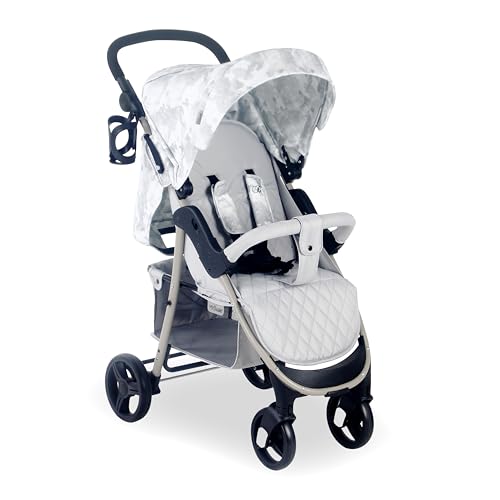A Brief History History Of Pushchair And Pram
페이지 정보
작성자 Valorie 작성일 25-09-27 20:11 조회 8 댓글 0본문
Understanding Pushchairs and Prams: A Comprehensive Guide
When it pertains to baby movement, the terms "pushchair" and "pram stores near me" are typically used interchangeably. Nevertheless, they represent unique kinds of baby carriers, each engineered for specific phases of a child's advancement and differed parental requirements. This short article explores the critical distinctions in between pushchairs and prams, their features, types, and factors to consider for brand-new parents.
What is a Pushchair?
A pushchair shops, frequently referred to as a stroller in some areas, is developed for kids who can sit up independently. Generally, pushchairs are modern, lightweight, and have a seat that can be reclined for included convenience. They might also feature a five-point harness to guarantee the child's security while on the go.
Secret Features of Pushchairs
- Light-weight Design: Most pushchairs best are made from lighter products, making them easy to steer and Pram store Near me transfer.
- Adjustable Seats: Many designs offer recline alternatives, accommodating resting or active positions.
- Canopy: Most pushchairs come equipped with a sunshade or canopy to safeguard the kid from sun exposure.
- Storage Space: They typically include a lower storage basket, best for holding diaper bags or shopping.
Common Types of Pushchairs
- Requirement Pushchairs: Traditional options appropriate for kids who can sit separately.
- Umbrella Strollers: Lightweight, compact, and simple to fold; suitable for taking a trip.
- All-Terrain Strollers: Built with larger wheels for off-road capabilities and smooth rides on diverse surface areas.
- Travel Systems: Combines a stroller and a baby safety seat, allowing moms and dads to move their kid seamlessly.
What is a Pram?
A pram, brief for "perambulator," is mostly created for babies, generally from birth until roughly 6 months. Prams are structured with a flat lying position that supports a newborn's anatomy, ensuring they are nestled appropriately.
Secret Features of Prams
- Flat Bed Design: Prams have a fully flat bed, which is essential for young babies who require to lie flat for comfort and health.
- Stylish Aesthetics: Many prams boast vintage or classic designs, often seen with luxurious fabrics and attractive finishes.
- Suspension System: Quality prams frequently include a suspension system to provide a smoother ride over rough surface.
- Extended Canopy: Extended sun defense and rain covers prevail.
Common Types of Prams
- Classic Prams: Featuring a conventional design, these are often styled to evoke nostalgia.
- Convertible Prams: These can quickly change from a pram to a pushchair and generally grow with the child.
- Lightweight Prams: More compact than standard prams, making them easier to transfer.
Differences Between Pushchairs and Prams
| Feature | Pushchair | Pram |
|---|---|---|
| Usage Case | For kids who can stay up | For newborns and babies |
| Design | Upright seat with reclining choice | Flat bed for resting |
| Weight | Usually lighter | Heavier due to sturdy building |
| Compactness | Folds quickly and compactly | May be bulkier, depending upon style |
| Age Range | 6 months to 4 years or older | Birth to approximately 6 months |
| Price Range | More inexpensive choices available | Often more costly due to materials and design |
Choosing Between a Pushchair and Pram
When choosing between a Pushchair Sale and a pram, a number of aspects necessitate consideration:
- Age of the Child: Newborns need a pram; older babies and young children will be more comfy in a pushchair.
- Way of life Needs: Parents who travel often might prefer light-weight pushchairs, while those trying to find comfort in design may favor prams.
- Budget plan: Prams can range from moderately to expensive; credible cheap pushchairs can cater to budget-conscious buyers.
- Storage Space: Consider how quickly the chosen model can fit in your cars and truck trunk or home storage.
FAQs
Q1: Can I use a pushchair for a newborn baby?
While particular pushchairs are developed with reclining features that may accommodate babies, it is normally recommended to utilize a pram or specially created infant safety seat for newborns.
Q2: Are travel systems worth the financial investment?
Travel systems can provide convenience by combining a safety seat and a stroller. They permit for seamless shift from car to stroller, which lots of moms and dads discover invaluable.
Q3: How do I keep my pushchair or pram?
Routinely tidy the material, look for mechanical concerns, and oil the wheels. Make sure to follow particular care instructions supplied by the maker.
Q4: What is the weight limit for pushchairs and prams?
Weight limitations differ by model: generally, pushchairs accommodate up to 50 pounds, while prams fit babies as much as 30 lbs. Always describe the producer's guidelines.

Q5: Is it vital to have a rain cover for my pushchair or pram?
Yes, a rain cover can secure your child from rain and wind, keeping comfort while preventing moist clothes.
In summary, pushchairs and prams serve important but unique roles in the mobility landscape for parents and caretakers. Picking the best design depends upon the kid's age, way of life needs, and household preferences. By comprehending the qualities, advantages, and differences between pushchairs and prams, parents can make educated choices that make sure convenience and safety for their child. Whether strolling through the park or browsing busy streets, the perfect mobility option is out there waiting.
댓글목록 0
등록된 댓글이 없습니다.

